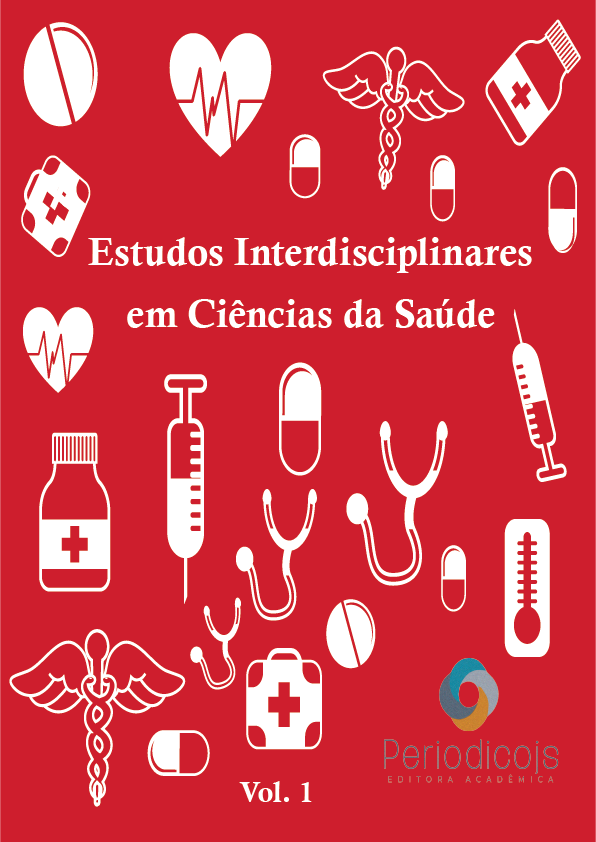Abstract
Obesity is characterized as a chronic disease in which the affected person has an accumulation of adipose tissue, beyond that it's being considered a public health pathology according to the World Health Organization (WHO). In this sense, the outline proposed by this expanded summary aims to clarify a relationship between obesity, chronic inflammation and associated comorbidities. Thus, we will detail the action of the main factors that coordinate these processes, such as adipokines, which are bioactive peptides secreted by adipocytes. These molecules may belong to the class of cytokines, as they are secreted by immune cells, such as macrophages. Among these, the main proteins acting in the inflammatory response that will be studied are: IL-6, TNF-α, leptin, resistin, C-reactive protein (CRP) (pro-inflammatory) and adiponectin (anti-inflammatory). Based on this clarification, we were able to list the main consequences arising from the imbalance in the systematic functioning of these derivatives that act with different mechanisms in the human body, in this case, in an individual affected by obesity. After that, we can understand that from these factors, new diseases called comorbidities will emerge, considering that they are directly linked to excess body fat.
References
DA SILVEIRA, Marcos Regini et al (2009), “Correlação entre obesidade, adipocinas e sistema imunológico. Rev Bras Cineantropom Desempenho Hum”, v. 11, n. 4, p. 466-472. Consultado a 22.07.2021, em https://periodicos.ufsc.br/index.php/rbcdh/article/download/1980-0037.2009v11n4p466/16524/0.
EINSTEIN, Hospital Israelita Albert (2020.). Obesidade. Consultado a 25.07.2021, em https://www.einstein.br/doencas-sintomas/obesidade
FANTUZZI, Giamila (2005). Tecido adiposo, adipocinas e inflamação. Jornal de Alergia e Imunologia Clínica , v. 115, n. 5, pág. 911-919, 2005. Consultado a 09.07.2021, em https://www.sciencedirect.com/science/article/pii/S0091674905004173.
FERNÁNDEZ-SÁNCHEZ, Alba; MADRIGAL-SANTILLÁN, Eduardo et al (2011). Inflammation, Oxidative Stress, and Obesity. International Journal Of Molecular Sciences, [S.L.], v. 12, n. 5, p. 3117-3132, 13 maio 2011. MDPI AG. Consultado a 12.07.2021, em http://dx.doi.org/10.3390/ijms12053117
FONSECA-ALANIZ, Takada et al (2006). O tecido adiposo como centro regulador do metabolismo. Arq Bras Endocrinol Metab 2006;50(2):216-229. Consultado a 14.07.2021, em https://www.scielo.br/j/abem/a/htcRSX7FjpchRd4gHNkg7VR/?format=pdf&lang=pt.
IZAOLA, Olatz et al (2015). Inflamación y obesidad (lipoinflamación). Nutricion hospitalaria, v. 31, n. 6, p. 2352-2358, 2015. Consultado a 10.07.2021, em https://pubmed.ncbi.nlm.nih.gov/26040339/.
JUNQUEIRA, José Carneiro (2017). Histologia Básica - Texto & Atlas, 13ª edição. Grupo GEN, 2017. 9788527732178. Consultado a 15.07.2021, em <https://integrada.minhabiblioteca.com.br/#/books/9788527732178/>. Acesso em: 15 jul. 2021.
KURODA M, Sakaue H (2017). Adipocyte Death and Chronic Inflammation in Obesity. J Med Invest. 2017;64(3.4):193-196. Consultado a 20.07.2021, em https://pubmed.ncbi.nlm.nih.gov/28954980/.
LUCIARDI, MC et al (2018). Estado pró-inflamatório em crianças obesas. Rev. chil. pediatr; Santiago, v. 89, n. 3, pág. 346-351, junho de 2018.Consultado a 28.07.2021, em http://www.scielo.cl/scielo.php?script=sci_arttext&pid=S0370-41062018000300346&lng=en&nrm=iso.
MAFRA, Denise; FARAGE, Najla Elias (2006). O papel do tecido adiposo na doença renal crônica. J Bras Nefrol, v. 28, n. 2, p. 109-13, 2006. Consultado a 14.07.2021, em https://bjnephrology.org/wp-content/uploads/2019/11/jbn_v28n2a09.pdf.
MIHARA, Masahiko; HASHIZUME, Misato et al (2011). IL-6/IL-6 receptor system and its role in physiological and pathological conditions. Clinical Science, [S.L.], v. 122, n. 4, p. 143-159, 14 out. 2011. Portland Press Ltd. Consultado a 04.08.2021, em http://dx.doi.org/10.1042/cs20110340.
OLIVEIRA, Ana Raquel Soares de et al (2017). Hipomagnesemia e sua relação com a inflamação crônica de baixo grau na obesidade. Revista da Associação Médica Brasileira, v. 63, n. 2, p. 156-163, 2017. Consultado a 22.07.2021, em https://www.scielo.br/j/ramb/a/Mvc9WvCtXrq8hMMqsN3pb8K/?lang=en.
ORGANIZATION, World Health (org.) (2020). Obesity and its roots. Consultado a 12.08.2021, em https://www.who.int/news-room/events/detail/2020/03/04/default-calendar/world-obesity-day.
PANEE, Jun (2012). Monocyte Chemoattractant Protein 1 (MCP-1) in obesity and diabetes. Cytokine, [S.L.], v. 60, n. 1, p. 1-12, out. 2012. Elsevier BV. Consultado a 22.07.2021, em https://doi.org/10.1016/j.cyto.2012.06.018. Acesso em: 18 jul. 2021
PITANGA, Francisco José Gondim (2020); BECK, Carmem Cristina, et al. Inatividade física, obesidade e COVID-19: perspectivas entre múltiplas pandemias. Revista Brasileira de Atividade Física & Saúde, v. 25, p. 1-4, 2020. Consultado a 15.07.2021, em https://rbafs.org.br/RBAFS/article/view/14262.
PRADO, Wagner Luiz do et al (2009). Obesidade e adipocinas inflamatórias: implicações práticas para a prescrição de exercícios. Revista Brasileira de Medicina do Esporte [online]. 2009, v. 15, n. 5, pp. 378-383. Consultado a 09.08.2021, em https://doi.org/10.1590/S1517-86922009000600012.
REILLY, Muredach P (2004). et al. Os níveis plasmáticos de leptina estão associados à aterosclerose coronariana no diabetes tipo 2. The Journal of Clinical Endocrinology & Metabolism , v. 89, n. 8, pág. 3872-3878, 2004. Consultado a 05.08.2021, em https://academic.oup.com/jcem/article-abstract/89/8/3872/2844448.
SHAMSUZZAMAN, Abu SM et al (2004). Associação independente entre a leptina plasmática e a proteína C reativa em humanos saudáveis. Circulação , v. 109, n. 18, pág. 2181-2185, 2004. Consultado a 15.07.2021, em https://www.ahajournals.org/doi/abs/10.1161/01.CIR.0000127960.28627.75.
SOUZA, Claudio Teodoro (2018). Envolvimento da inflamação subclínica e do estresse oxidativo na resistência à insulina associada à obesidade. HU rev, p. 211-220, 2018. Consultado a 05.08.2021, em https://periodicos.ufjf.br/index.php/hurevista/article/view/16950/pdf.
TEIXEIRA, Danilo Augusto et al (2009). Proteína C-reativa: associação entre inflamação e complicações pós-infarto agudo do miocárdio em idosos. Rev Bras Clin Med, v. 7, p. 24-26, 2009. Consultado a 26.07.2021, em http://bases.bireme.br/cgi-bin/wxislind.exe/iah/online/?IsisScript=iah/iah.xis&src=google&base=LILACS&lang=p&nextAction=lnk&exprSearch=507141&indexSearch=ID.
TRAYHURN, P.; WOOD, I.s (2005). Signalling role of adipose tissue: adipokines and inflammation in obesity. Biochemical Society Transactions, [S.L.], v. 33, n. 5, p. 1078-1081, 26 out. 2005. Portland Press Ltd. Consultado a 14.07.2021, em http://dx.doi.org/10.1042/bst0331078.
YAMASAKI, Masao et al (2018). Vaccinium ashei leaves extract alleviates insulin resistance via AMPK independent pathway in C2C12 myotube model. Biochemistry and biophysics reports, v. 14, p. 182-187, 2018. Consultado a 05.08.2021, em https://www.sciencedirect.com/science/article/pii/S2405580817302212.
ZHANG, Xinmei et al (2011). Selective inactivation of c-Jun NH2-terminal kinase in adipose tissue protects against diet-induced obesity and improves insulin sensitivity in both liver and skeletal muscle in mice. Diabetes, v. 60, n. 2, p. 486-495, 2011. Consultado a 09.07.2021, em https://diabetes.diabetesjournals.org/content/60/2/486.short.

